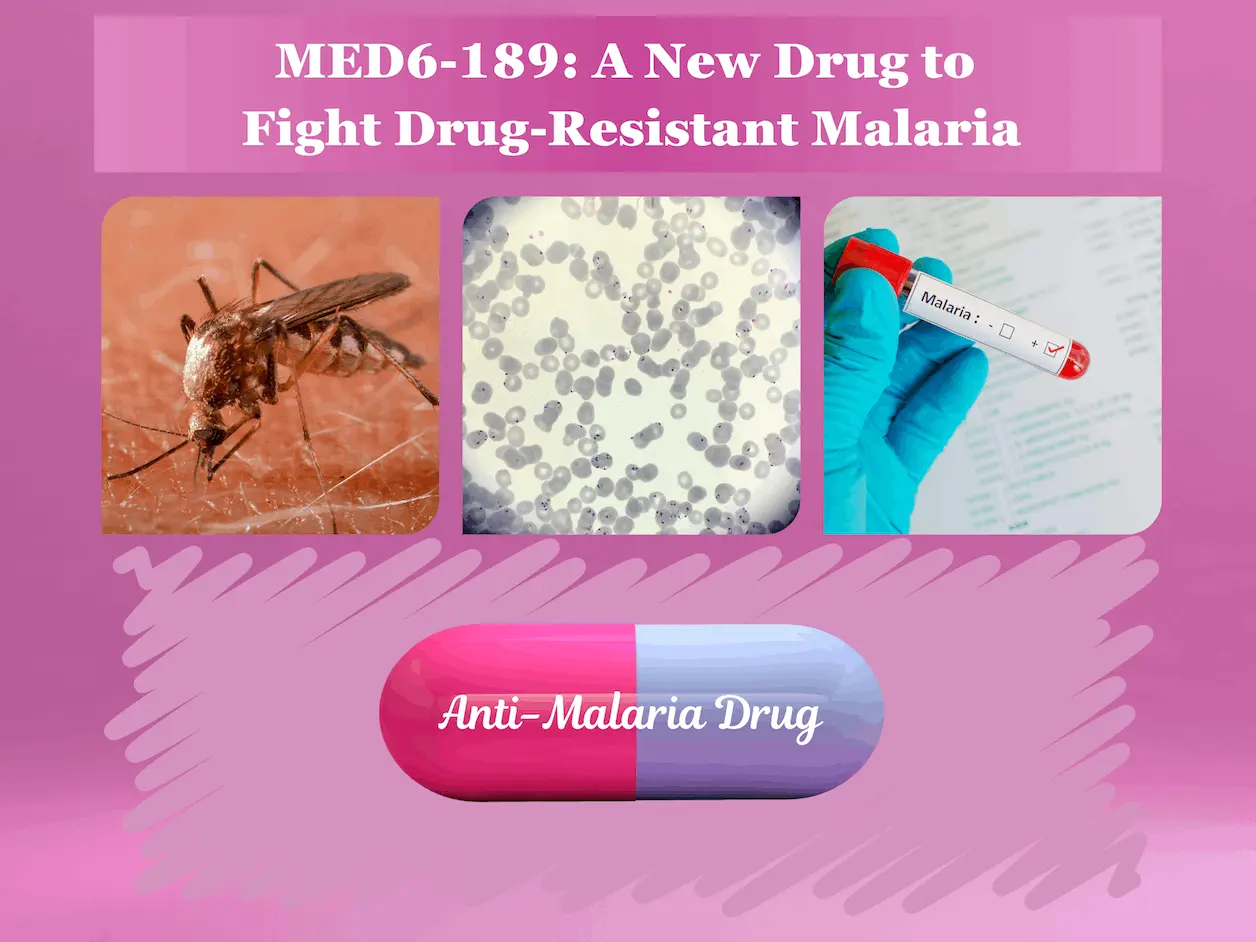Researchers from Yale University and other institutions have identified MED6-189 as a new antimalarial drug, a new development that might change the dynamics of malaria treatment. This new compound is active against sensitive and resistant forms of Plasmodium falciparum, which is the most virulent. Malaria, a devastating disease caused by parasitic protozoans of the genus Plasmodium, continues to be a significant global health threat. The disease continues to be the cause of mortality and morbidity in many societies despite efforts addressing it being put in place, such as that of prevention and treatment. The development of resistance among the malaria parasites to the available drugs has made remedying the condition difficult.
Understanding MED6-189
MED6-189, a member of the kalihinol family of isocyanoterpene natural products, has previously been shown to have activity against the malaria parasite. However, little is known about its specific mechanism of action. The researchers then observed that MED6-189 has a disruptive ability on the parasite even at the very highly selective and intracellular location in the apicoplast, which is critical for the parasite. Such inhibiting function of this drug diminishes the parasites’ crucial block synthesis and eventually kills them.
Besides, it has been demonstrated by MED6-189 that it protects the parasite from vesicular trafficking. This process is typically fundamental for the movement of proteins and other molecules around the cell; removing such processes can perhaps lead to cell death.
The Promise of MED6-189
The discovery of MED6-189 offers several potential advantages over existing antimalarial drugs:
Potent activity against drug-resistant parasites
A drug-resistant strain of Plasmodium falciparum has been treated with MED6-189 and shown effective, which is becoming increasingly prevalent. Drug-resistant pathogens have given rise to malaria being increasingly challenging to control. With the evolution of the parasites, current antimalarial drugs have grown less and less effective. However, it is effective against both drug-sensitive and drug-resistant Plasmodium falciparum strains pretreatment with various drugs. This indicates that it may also help treat malaria in regions where drug resistance is an issue.
Unique mode of action
MED6-189 has a unique mode of action. It is aimed at the apicoplast, which is critical for the malaria parasite’s survival. The apicoplast is a structure that evolved from an engulfed bacterium within a eukaryotic host cell several hundred million years ago. It is crucial for the existence of the parasite that resides within. The function of the apicoplast is targeted by MED6-189, which eventually causes the parasite’s death. This offers a new way of treating malaria since the other antimalarial medications currently available focus on other parts of the protozoan parasite.
Broad-spectrum activity
MED6-189 is also efficacious for other malaria species, such as Plasmodium vivax and Plasmodium ovale, respectively. This is relevant as these species are also responsible for a fair number of malaria cases reported globally.
Favorable safety profile
Counts from preclinical studies of this drug optimally affect safety and tolerability. This means that the drug is unlikely to produce some severe side effects. This is critical because a new antimalarial drug that is introduced to the market has to be safe for people to use.
Overall, MED6-189 is a new potent antimalarial agent and appears to have many advantages over currently available medications. It is effective against drug-resistant strains of parasites, has a new mechanism of action, is effective on a range of malaria parasite species, and does not have adverse safety events. MED6-189 may be useful in the fight against malaria if future research reveals these results.
Conclusion
This is an important milestone achievement in the combat against malaria through the launch of MED6-189. This new antimalarial medication has several benefits over the currently available options, including effectiveness against resistant parasites, novel mechanisms of action, a more comprehensive range of effects, and low toxicity.
This means that MED6-189 will be augmented and become an indispensable weapon in the war against malaria, or at least its facets. There is a need for new antimalarial drugs because the threat of drug resistance is increasing, and there is a need for the welfare improvement of millions of people across the globe.
FAQs
MED6-189 is a new antimalarial drug that works on all forms of the parasite, including the multi-drug-resistant malaria parasite Plasmodium falciparum. It is a kalihinol analog, which is an antimalarial agent derived from natural sources.
It attacks the apicoplast, which is an organelle system necessary for the life of the malaria parasite. The plastid is a structured remnant of a bacteria that was first lysed into a eukaryotic cell several millions of years ago. This is now central to the pathogen’s existence. MED6-189 affects the processes of the apicoplast, which eventually causes the parasite to die.
Preclinical studies have shown that MED6–189 is safe and generally well tolerated. This implies that serious adverse effects from the drug are not expected. Nevertheless, further investigation into its safety in humans is essential.
Currently, MED6-189 is being tested in Phase I clinical trials on healthy subjects. If the studies are successful, the drug will be available for patients in a few years.
Article Source: Reference Paper Abstract | Full Paper on bioRxiv | Reference Article.
Follow Us!
Learn More:
Anchal is a consulting scientific writing intern at CBIRT with a passion for bioinformatics and its miracles. She is pursuing an MTech in Bioinformatics from Delhi Technological University, Delhi. Through engaging prose, she invites readers to explore the captivating world of bioinformatics, showcasing its groundbreaking contributions to understanding the mysteries of life. Besides science, she enjoys reading and painting.
















